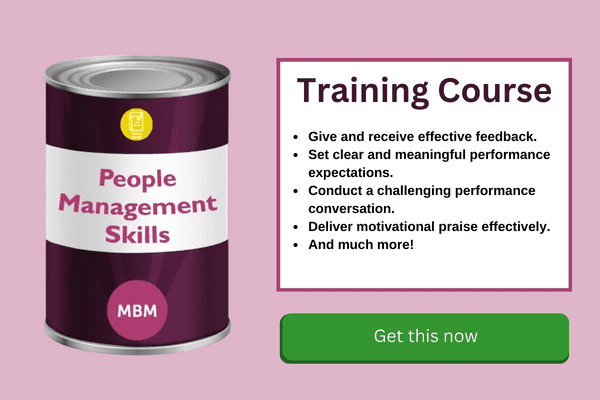Inclusive Teams Make Better Business Decisions Up to 87% of the Time,” – Forbes
To gain a competitive edge, businesses need to have all their organisational bases covered. One of the primary aspects of the same is their HR department. However, not many businesses put efforts into their HR management which can actually help them progress. Well, if you are wondering about how to do so, then we have got you covered.
Here, in this post, we have covered all the aspects of HR management that can assist your business with streamlined workflows and growth opportunities. After all, effective human resource (HR) management plays a crucial role in helping businesses achieve growth and success.
Furthermore, by implementing strategic HR practices and exercises, companies can optimise employee performance, enhance productivity, and eventually gain a competitive advantage in the market. So let’s start with learning all about HR management and then proceed with the strategies and benefits. Let’s dive in!

HR Management: Overview
When it comes to Human resource management, it involves planning, organising, directing, and controlling the functions related to recruitment. Not only this, but it is also known to cover all the aspects like placement, training & development, performance appraisal, compensation, labour relations, health, and safety of employees working in an organisation.
Also, the primary goal of the HR management team is to ensure that the organisation can match its goals by having the right number and kind of employees to do the job.
An effective HR team works to attract and retain talented employees, develop their skills, motivate them to perform to the best of their abilities and maintain good employee relations.
All these activities directly impact business performance, productivity, and growth over the long run. Also, if you are still thinking about how an HR management team can work wonders for your business and help it progress ahead, then the below segment can help you with all the clarity. So read on.
Key Components of Strategic HR Management

No business can achieve its goals without top-notch human capital. An effective HR management strategy is, therefore, crucial. Here’s a deeper look at the essential elements that form the foundation of any robust HR plan.
-
Defining the HR Mission
The HR team must start by defining a clear mission statement. This helps align HR activities to organisational objectives and priorities. Also, a comprehensive mission demonstrates HR’s commitment to attracting and developing talent, fostering a high-performance culture, and enabling business growth through people practices.
With a well-communicated mission, HR earns recognition as a strategic partner rather than just an administrative department.
-
Do your learners come back from training and do nothing differently?
Sticky Learning ® is 7 times more effective than 1-day training courses. Plus, you will get a Chain of Evidence proving your Return on Investment. Discover soft skills training that changes behaviours long term.
Get Started Now
Shaping Organisational Culture
Culture has a massive influence on employee behaviour and productivity. HR plays a vital role in assessing, shaping, and strengthening desirable cultural traits through various touchpoints. These include recruitment, onboarding, policies, training programs, rewards, and recognition.
Also, HR keeps an eye on cultural changes and ensures that company practices align with the desired norms, values, and work styles. A healthy culture aligned with business goals is key to high employee engagement and performance levels.
-
Attracting Top Talent
To deliver on the organisational mission, HR must access the best talent pools. This involves staying abreast of labour market trends, exploring diverse channels, and tailoring employer branding to attract candidates with the right qualifications, motivations, and cultural fit.
Employer value propositions highlight competitive compensation, learning opportunities, work-life balance, and other benefits to draw top talent toward open positions. HR then efficiently screens and interviews candidates to identify the most suitable hires.
-
Managing and Developing People
Once on board, HR facilitates continual performance management through goal-setting, coaching, feedback, and reviews to ensure employee development and business results. It also designs and delivers role-based training programs to foster new skills and capabilities required as per business needs and succession plans.
So, with the increase in remote work trends, many difficulties have arisen for both management and employees. To address these remote work challenges, succession planning can help identify talented individuals for key roles, as well as high-potential employees who could benefit from mentorship and accelerated career progression through leadership opportunities and challenges.
-
Rewarding Achievements
Monetary and non-monetary rewards administered through well-planned compensation, benefits, recognition programs, and career advancement avenues help retain top performers. Also, HR bridges the gap between work contributions and rewards experienced by all employees.
Competitive pay, together with intangible perks like flexible work hours, additional leaves, and creativity-fostering work environments, keep employees satisfied and engaged in their duties.
Steps That Make HR Management Successful

If you are thinking about what makes HR management successful, then we are here to help you understand the different steps that make it so proficient. Below we cover the different aspects of HR management that help businesses to get an edge over the others. Read on.
#1. Employee Recruitment and Selection
Attracting and hiring the right candidates is crucial for business growth. A robust recruitment process starts with defining job requirements. So, the HR team should employ active and passive sourcing techniques like publishing vacancies on job sites and referrals to expand the candidate pool.
Screening CVs based on predefined criteria can help in the process of shortlisting potential candidates. Also, tools like online assessments and video interviews aid in initial screening to evaluate a candidate’s skill and suitability for the role.
Qualified candidates are then invited for interviews where their technical and soft skills are assessed. In fact, background and reference checks validate candidate experience. A structured selection process ensures the identification of applicants with the right expertise, attitude, and cultural fit. Also, offer letters are issued after assessing multiple candidates to hire those most suitable for organisational needs.
Examples:
- Amazon – It follows a stringent 8-hour recruitment process involving 6 phone/video interviews and assessments to hire the best tech talent.
- McKinsey – It taps referrals from existing employees, also, taps top B-school campuses, and uses case studies to identify critical thinking during interviews.
#2. Training and Development
Regular training programs help employees enhance competencies and performance. A detailed training needs analysis identifies skill gaps. Also, Onboarding programs familiarise new hires with organisational culture and job roles. Department-wise technical skills workshops help staff upgrade qualifications.
Soft skills sessions equip them to deal with customers efficiently. Also, learning management systems enable e-learning and mentorship by senior staff to aid junior colleagues. In fact, management spends on conference participation and certification courses to motivate continuous learning. Evaluating training effectiveness through feedback and metrics helps refine future programs as per evolving business requirements, thereby keeping employees engaged and productive.
Examples:
- Microsoft – It focuses on reskilling with programs like ML Academies, and Azure Workshops and sponsors 70,000 hours of training annually through LinkedIn Learning.
- Infosys – It launched the InfyTQ digital platform giving employees remote access to 4,000+ courses and certifications covering new technologies like AI, Big Data, etc.
#3. Performance Management
A robust performance management system aids objective evaluation of individual and team contributions. Also, key result areas and measurable OKRs aligned with organisational goals are set during appraisals. Regular one-on-ones and multi-source feedback help managers guide and counsel employees. Also, periodic reviews track progress and document achievements. Rewards and recognition motivate high performers.
Corrective action counselling improves poor performers. Consequently, feedback is incorporated to upgrade skills and work processes. Additionally, rewards based on meritocracy boost morale and accountability. Moreover, transparent reviews strengthen employer-employee understanding and trust. Furthermore, competency improvement helps mobilise talent towards goals, thereby raising business effectiveness.
Examples:
- Accenture – It adopts frequent performance check-ins, multi-rater feedback, and calibrating reviews with multiple managers to assess employees fairly.
- Google – OKR goals are aligned at the individual, team, and organisational levels across all functions driving accountability for results.
#4. Compensation and Benefits
An attractive compensation and benefits policy is key to employee motivation and retention. Core components include competitive basic pay aligned with qualification, experience, and industry standards. Performance bonuses, commissions, and spot awards recognise extra efforts. Attractive medical, life, and accident insurance coverage safeguards staff welfare. And maternity support encourages work-life balance.
Learning and skill development opportunities offer career growth avenues. Moreover, employee stock ownership plans allow sharing business success. In addition, festive gifts and wellness programs boost associate satisfaction. Furthermore, strategic compensation planning to factor business goals ensures affordability, while benchmarking ensures competitiveness to attract and engage talent long-term, thereby raising productivity.
Examples:
- Netflix – It offers unlimited vacation, medical benefits, and parental leave and allows employees flexibility to innovate without bureaucracy.
- Starbucks – Besides insurance, it offers tuition reimbursement for undergraduate degrees to promote lifelong learning among employees.
#5. Employee Engagement
Fostering high employee engagement binds staff emotionally with organisational vision and purpose. Team outings, informal gatherings, and fun contests aid collaborative relationships. Recognition programs laud best practices and milestones publicly motivating others. Also, leaders communicate regularly and update stakeholders on goals and roadmaps to align individual efforts. Feedback mechanisms record suggestions welcomed transparently.
Open-door policies resolve issues promptly to boost morale. Diversity and inclusion initiatives promote a sense of belongingness. Community initiatives allow staff to use expertise to help social causes they resonate with. Also, periodic pulse surveys track satisfaction prompting corrective actions timely. Strategic engagement strengthens the cohesion and loyalty needed to surmount challenges together propelling business growth.
Examples:
- SAP – It organises hackathons encouraging product innovation. Also, Global Community Service Month allows staff to volunteer and contribute towards social causes.
- Adobe – It surveys employee experience regularly and addresses pain points timely through process improvements and internal communications keeping staffers motivated.
Benefits of Effective HR Management That Helps Business Growth

Now in the primary section of the post where we are going to discuss how effective HR management can assist business growth. Below are the pointers that can help you understand how it can give your business an edge over the others:
1. Increased Productivity
A skilled workforce is key to higher productivity. Continuous learning and development programs keep employees abreast of the latest tools and work processes. So, well-designed training helps staff enhance competencies and qualifications. Motivated employees work with more involvement and accountability. They willingly take on additional responsibilities and complete tasks efficiently.
Regular performance reviews and real-time feedback ensure employees and teams are moving towards goals urgently. Rewards and recognition retain high performers. Also, transparent appraisals address gaps early.
Interestingly, a study found that organisations with highly effective learning programs achieved nearly 2x greater productivity compared to bottom performers. Training helps employees enhance their skills and perform better.
2. Retention of Talent
Attracting and retaining talent is critical for business sustainability. High attrition rates disrupt operations and productivity due to gaps during transitions. It also burdens the organisation with rehiring and retraining costs. Strategic HR focuses on employee well-being through fair compensation, work-life balance initiatives, and growth opportunities. It ensures pay and perks are at par with industry standards.
Transparent appraisals and on-time bonuses boost morale. Career development programs like internal job postings, manager referrals, and training keep staff motivated. As per research, flexible work, career development, and a positive culture can boost retention. Also, employees stay longer (2 years more on average) when their needs are adequately met at the workplace.
3. Stronger Employer Brand
A strong employer brand is critical to attracting quality talent. Positive employee testimonies and reviews on job portals enhance employer reputation. Showcasing staff welfare practices promotes the organisation as a ‘Great Place to Work’. Highlighting culture-building initiatives portray an inclusive learning environment. Communicating recognitions and accolades reinforces credibility in the talent market.
Outbound company representation by staff epitomises pride in the association. Also, social media updates featuring employee engagement programs improve employer visibility. As per a recent study, positive employer reviews significantly influence perception and hiring.
4. Innovation & Change Management
Fostering an environment of creativity boosts business growth. Open communication platforms encourage employees to freely propose novel ideas. Leader commitment to reasonable risk-taking motivates experimentation. Focusing on challenging multi-skilled employees sparks fresh perspectives. Also, training in design thinking equips staff to solve problems innovatively. Recognising innovations through awards motivates ideation.
Transparent feedback on the feasibility of ideas preserves motivation. Furthermore, diversity and inclusion strengthen innovation through varied viewpoints. Additionally, establishing cross-functional work teams aids in collaborative problem-solving. Moreover, the research found that diverse and inclusive teams composed of problem-solvers from different backgrounds file more than 50% patents. Overall, diversity boosts innovative thinking.
5. Higher Profitability
All strategic HR interventions collectively strengthen organisational effectiveness and efficiency over time. Increased productivity accelerates goal fulfilment. Low attrition saves costs while talent retention harvests return on training/development investments.
Furthermore, a positive employer brand reinforces sourcing and positions the company attractively for talents. So, nurturing an innovative and adaptive culture boosts market responsiveness.
Continuous improvements championed by engaged employees optimise processes, augmenting quality and customer satisfaction. Consequently, it improves revenues through increased market share, orders, and renewals. According to one research study, companies scoring highest on employee engagement achieved revenue three times greater than lower scorers over a period. Clearly, engagement impacts profits.
FAQs Answered

How Does the HR Management System Assist in Business Growth?
An HR management system helps track recruitment processes, employee training, and development activities more efficiently. So, this results in hiring the right talent, enhancing employee skills, and motivating better performance which collectively improves organisational productivity, innovation, and profits driving business growth.
What is the Primary Role of HR in Business Growth?
The role of HR in business growth includes attracting quality talent, developing employee competencies through regular training, engaging employees, and ensuring high retention rates. Also, it aims to foster a culture of performance, change-readiness, and innovation within the organisation which are crucial for business expansion over time.
How Can the HR Management Team Contribute to Your Business’s Success?
The HR role can contribute to business success by developing strategic workforce plans in line with organisational goals. Designing progressive HR policies focused on talent acquisition, performance management, learning & development, compensation, etc. increases employee commitment and motivation levels. Also, this raises overall productivity, quality, revenues, and profitability supporting business growth.
What is the Effectiveness of Human Resources in the Field of Business Management?
The effectiveness of human resources in business management lies in leveraging people practices to optimise workforce talent and potential. Effective HR ensures the availability of the right skilled manpower and job fitment. It develops a high-performing and engaged workforce through training, rewards, and engagement initiatives. Also, all these enhance employee contribution and organisational effectiveness strengthening business operations, decision-making, and achievement of objectives.
Final Thoughts
Hopefully, you are clear about the aspects that show how effective HR management helps business growth and pave the way for its overall success. Also, your organisation must put time and effort into having a great HR management team and practices in place. The above pointers show how it can help an organisation get a competitive edge and eventually succeed in its market.
Not only does it boost productivity but also enhances financial growth and eventually helps businesses match with the latest market needs and requirements. So, do not hesitate and have a top HR management in place as it can help your enterprise achieve its full potential and get ahead in the race. Good luck!





